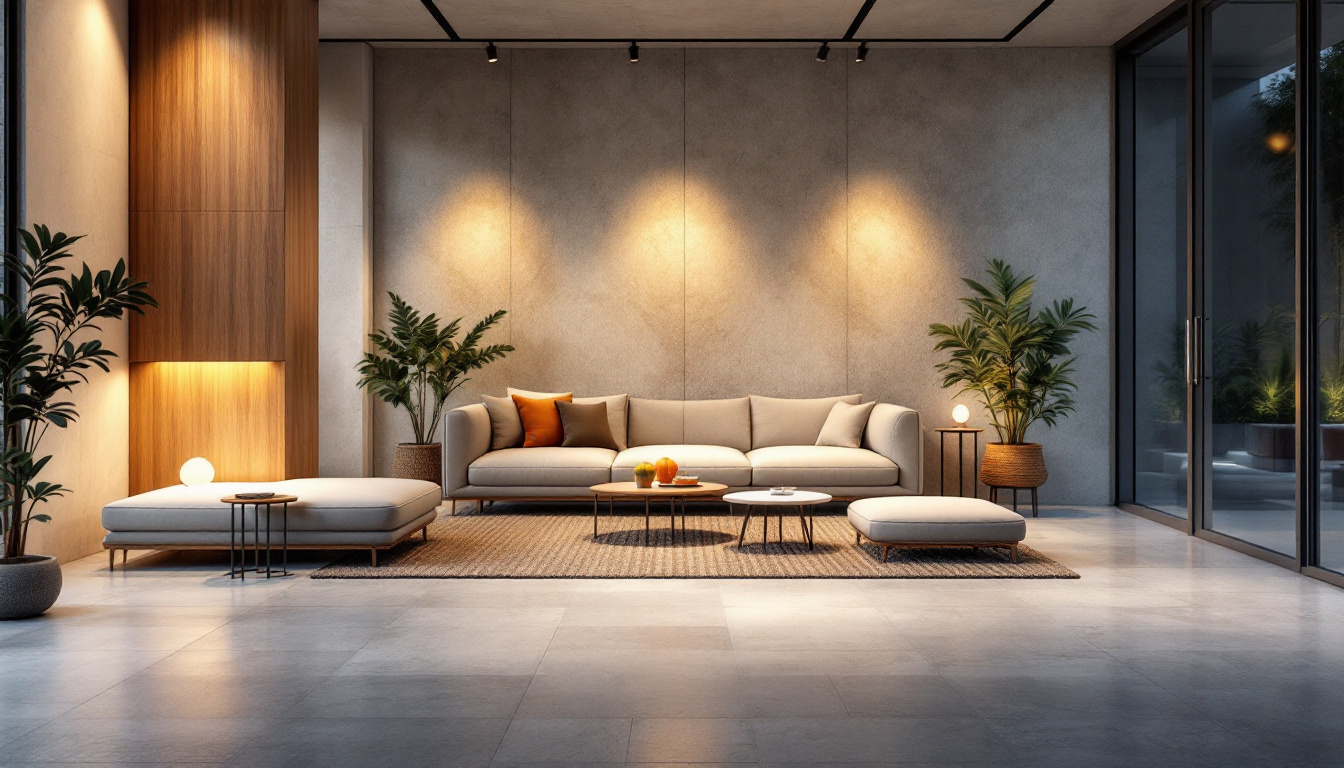
As the demand for recessed lighting continues to grow, lighting contractors frequently encounter a range of questions regarding the best bulbs to use in these fixtures. This article aims to address some of the most common inquiries, providing valuable insights into bulb types, compatibility, and installation tips.
Recessed lighting, often referred to as can lighting or pot lighting, is a popular choice for both residential and commercial spaces. These fixtures are installed into the ceiling, creating a clean and modern look while providing ample illumination. However, selecting the right bulb is crucial to achieving the desired lighting effect and energy efficiency. The versatility of recessed lighting allows it to be used in various applications, from highlighting artwork in a gallery to providing general lighting in a living room, making it a staple in contemporary design.
When it comes to recessed lighting, several types of bulbs are commonly used. The most popular options include incandescent, halogen, CFL (compact fluorescent), and LED (light-emitting diode) bulbs. Each type has its unique characteristics, advantages, and disadvantages. Understanding these differences can help you make an informed decision that aligns with your lighting needs and preferences.
Incandescent bulbs are traditional and provide a warm light, but they are less energy-efficient and have a shorter lifespan compared to newer technologies. Halogen bulbs offer a brighter light and better color rendering but also consume more energy and generate more heat. These bulbs can be a great choice for accent lighting, as they enhance colors and textures, making them ideal for showcasing architectural features or decorative elements in a room.
CFL bulbs are more energy-efficient than incandescent and halogen options, but they can take time to warm up and may not be suitable for dimming applications. LED bulbs, on the other hand, are the most energy-efficient choice, with a long lifespan and instant brightness, making them increasingly popular among contractors and homeowners alike. Additionally, LED technology has advanced significantly, allowing for a variety of color temperatures and styles that can complement any décor.
Choosing the right bulb for recessed fixtures involves considering several factors. First, assess the purpose of the lighting. For task lighting, a brighter bulb with a higher lumen output may be necessary, while ambient lighting can be achieved with softer, lower-output bulbs. Think about the activities that will take place in the space; for example, a home office may benefit from brighter, cooler lighting to enhance focus, while a cozy reading nook might call for warmer, softer illumination.
Next, consider the color temperature of the bulb. Measured in Kelvins (K), color temperature can significantly affect the mood of a space. Warmer temperatures (2700K-3000K) create a cozy atmosphere, while cooler temperatures (4000K-5000K) are more suited for workspaces and kitchens. It’s also worth noting that some LED bulbs offer adjustable color temperatures, allowing you to customize the ambiance according to the time of day or specific activities.
Finally, compatibility with dimmers and the fixture itself is essential. Not all bulbs are dimmable, and using a non-dimmable bulb with a dimmer switch can lead to flickering or damage. Always check the specifications before making a selection. Additionally, consider the beam angle of the bulbs; a narrow beam can create focused lighting, perfect for highlighting artwork, while a wider beam can provide general illumination across a larger area. Taking the time to evaluate these factors will ensure that your recessed lighting enhances both the functionality and aesthetic appeal of your space.
In today’s market, energy efficiency is a key consideration for lighting contractors and their clients. With the rising costs of electricity and a growing emphasis on sustainability, selecting energy-efficient bulbs can lead to significant savings over time.
LED bulbs are known for their exceptional energy efficiency. They use up to 80% less energy than incandescent bulbs, translating to substantial savings on electricity bills. For contractors, recommending LED options can be a selling point for clients looking to reduce their energy consumption.
Moreover, LEDs have a longer lifespan, often lasting up to 25,000 hours or more, compared to the 1,000 hours typical of incandescent bulbs. This longevity means fewer replacements and less waste, contributing to a more sustainable lighting solution. Additionally, the reduced frequency of bulb changes can lead to lower maintenance costs, especially in commercial settings where labor and time are significant factors. This aspect is particularly appealing to businesses that want to minimize downtime and ensure consistent lighting quality.
While LED bulbs tend to have a higher upfront cost compared to incandescent or CFL bulbs, the long-term savings on energy bills and replacement costs often outweigh this initial investment. Educating clients on the total cost of ownership can help them understand the value of choosing LED technology. Furthermore, the advancements in LED technology have led to a wider range of price points, making it easier for clients to find options that fit their budget without compromising on quality.
In addition, many utility companies offer rebates and incentives for switching to energy-efficient lighting, further mitigating the initial expense. Contractors should stay informed about these programs to provide clients with the best options. Some states even have specific initiatives aimed at promoting energy efficiency in residential and commercial properties, which can lead to additional savings. By leveraging these incentives, contractors can not only enhance their service offerings but also foster a sense of environmental responsibility among their clients, encouraging them to make more informed choices about their lighting solutions.
Proper installation is crucial for the performance and longevity of recessed lighting. Lighting contractors must adhere to best practices to ensure safety and efficiency during the installation process.
Before installation, it is essential to turn off the power to the circuit to avoid any electrical hazards. Once the power is off, the old bulb can be removed by gently twisting it counterclockwise. If the fixture is new, ensure that the housing is correctly installed in the ceiling before inserting the bulb.
When installing LED bulbs, it is often recommended to use a socket adapter if the LED bulb is not designed for the existing fixture. This can help prevent potential issues with overheating or flickering. After securely placing the new bulb, restore power and test the fixture to ensure proper operation.
Safety should always be a priority during installation. Contractors should wear appropriate personal protective equipment and ensure that the work area is clear of obstructions. Additionally, using a voltage tester can help confirm that the power is off before starting any electrical work.
It is also important to check the manufacturer’s guidelines for specific installation instructions and safety warnings. Following these guidelines can prevent accidents and ensure that the lighting system operates as intended.
Even with careful selection and installation, issues may arise with recessed lighting systems. Understanding common problems and their solutions can help contractors provide better service to their clients.
One of the most frequent issues is flickering bulbs, which can be caused by incompatible dimmer switches, poor connections, or faulty bulbs. If a flickering issue occurs, contractors should first check the dimmer compatibility with the bulb type and replace any faulty components.
Another common problem is overheating, particularly with incandescent and halogen bulbs. This can lead to reduced bulb life and even fire hazards. Ensuring that the fixture is rated for the wattage of the bulb being used and that there is adequate ventilation is crucial to preventing overheating.
To extend the lifespan of recessed lighting bulbs, contractors should recommend using LED bulbs whenever possible due to their durability and energy efficiency. Additionally, ensuring proper installation and ventilation can help prevent overheating and other issues that may shorten bulb life.
Regular maintenance, such as cleaning the fixtures and checking for loose connections, can also contribute to the longevity of the lighting system. Educating clients on the importance of maintenance can lead to fewer service calls and happier customers.
In conclusion, selecting the right bulbs for recessed lighting involves understanding the various options available, considering energy efficiency, and ensuring proper installation and maintenance. By addressing common questions and concerns, lighting contractors can provide valuable guidance to their clients, helping them make informed decisions about their lighting choices.
As the industry continues to evolve, staying updated on the latest technologies and trends is essential for lighting contractors. By prioritizing energy efficiency, safety, and customer satisfaction, contractors can build a successful lighting business that meets the needs of modern consumers.
Ultimately, the right bulbs can enhance both the functionality and aesthetic appeal of a space, making recessed lighting a worthwhile investment for any project. With the right knowledge and approach, lighting contractors can navigate the complexities of recessed lighting with confidence.
Ready to elevate your lighting projects with the best bulbs on the market? Look no further than LumenWholesale for all your recessed lighting needs. Our commitment to quality and affordability ensures that you receive spec-grade lighting products without the premium price tag. With LumenWholesale, you can trust that you’re getting the highest industry standards in every purchase. Plus, with free shipping on bulk orders, you can stock up on superior lighting solutions while maximizing your budget. Don’t compromise on quality or value; choose LumenWholesale for Wholesale Lighting at the Best Value and light up your spaces with confidence and convenience.

Discover the essential guide to outdoor wall lights for houses, tailored for lighting contractors.

Illuminate your projects with expert advice! Discover essential tips and tricks tailored for lighting contractors to master plug cord installations, ensuring safety, efficiency, and brilliance in every setup..

Discover how Phillips Warehouse is revolutionizing the lighting industry by streamlining operations for contractors.

Discover the transformative journey of 4ft LED lights in the lighting industry.